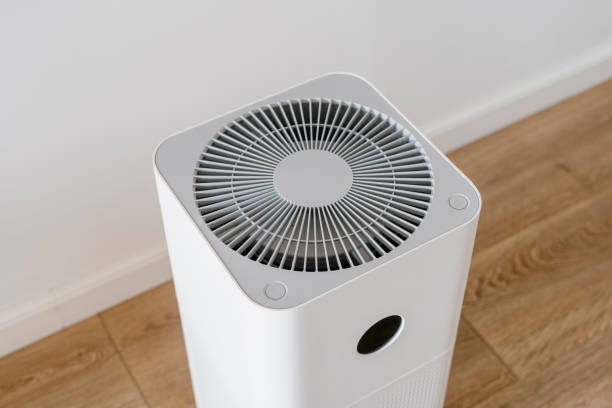AC Replacement Plant City, FL

When your air conditioner struggles with the Plant City heat, expert AC replacement is the most efficient solution. This page guides homeowners through deciding when to replace, detailing key signs like age, frequent repairs, and rising energy bills. It outlines the professional AC replacement process, from consultation and system selection to precise installation. Investing in a new AC provides significant energy savings, enhanced comfort, improved indoor air quality, and peace of mind, ensuring your home stays cool and comfortable for years to come.

Expert AC Replacement in Plant City
When your air conditioner can no longer handle the demanding Plant City heat, a full replacement becomes the most effective and efficient solution. An aging or failing AC system not only struggles to keep your home comfortable but also drives up energy costs and leads to a cycle of expensive repairs. Investing in a new, high-efficiency air conditioning system restores comfort, provides long-term financial savings, and delivers the peace of mind that comes with reliable home cooling. A professional replacement service ensures your new unit is perfectly suited for your home, installed with precision, and ready to perform optimally for years to come.
Deciding When to Replace Your Air Conditioner
Knowing when to move from repairs to a full replacement is a crucial decision for any homeowner. Continuing to fix an outdated system can be a poor investment. Certain clear indicators suggest that a replacement is the most sensible and cost-effective path forward.
Key Signs It’s Time for a New AC:
- Age of the Unit: Most air conditioners in Florida have a lifespan of 10 to 15 years. If your system is within or beyond this range, its efficiency has likely declined significantly, and it is more prone to major component failure.
- Frequent and Costly Repairs: If you find yourself scheduling repairs season after season, the accumulated costs can quickly approach the price of a new unit. When repair bills become a regular expense, a replacement offers a more stable and predictable long-term solution.
- The Rule of 5,000: A practical industry guideline can help clarify your decision. Multiply the age of your AC unit by the estimated cost of a potential repair. If the total exceeds $5,000, replacement is generally the more financially sound choice. For example, a $600 repair on a 10-year-old unit ($600 x 10 = $6,000) strongly points toward replacement.
- Rising Energy Bills: An old air conditioner has to work much harder to produce the same level of cooling, leading to a noticeable increase in your monthly electricity bills. A new, energy-efficient model can dramatically reduce your energy consumption.
- Inconsistent Cooling and Humidity: If your system leaves some rooms warm while others are cold, or if your home feels persistently humid and clammy, it’s a sign the unit can no longer effectively cool and dehumidify your space.
- Use of R-22 Refrigerant: R-22 refrigerant has been phased out due to its environmental impact. If your older system uses it, servicing has become extremely expensive and difficult as supplies dwindle. Modern systems use the more efficient and environmentally friendly R-410A refrigerant.
- Unusual Noises or Odors: Loud grinding, rattling, or buzzing sounds can indicate serious mechanical failures within the compressor or motor. Similarly, persistent musty odors can signal issues that are often too costly to resolve in an aging unit.
The Professional AC Replacement Process
A successful AC replacement is more than just swapping out an old box for a new one. It involves a systematic process designed to ensure your new system is perfectly matched to your home's unique needs for maximum efficiency and comfort.
Step 1: In-Home Consultation and Load CalculationThe process begins with a thorough assessment of your home. Technicians perform a detailed Manual J load calculation to determine the exact cooling capacity your home requires. This calculation considers factors like square footage, window placement, insulation levels, and ceiling height, ensuring the new unit is sized correctly—not too big and not too small.
Step 2: Guidance on System SelectionBased on the assessment, you will receive expert guidance on choosing the right system. This includes exploring different types of units, such as traditional central air conditioners, versatile heat pumps that provide both heating and cooling, or zoned ductless mini-split systems. You'll also learn about energy efficiency ratings like SEER (Seasonal Energy Efficiency Ratio), which directly impacts your long-term operating costs. Trusted brands like Trane, Carrier, Rheem, Goodman, and Lennox offer a range of models to fit various performance needs and budgets.
Step 3: Safe Removal of the Old UnitOnce a new system is selected, trained technicians will carefully and safely disconnect and remove your old air conditioning unit. This includes the proper and environmentally responsible disposal of the old equipment and any remaining refrigerants, adhering to all local and federal regulations.
Step 4: Precision Installation of the New SystemThe installation of the new AC unit is performed with meticulous attention to detail. This includes setting the new outdoor condenser on a solid, level pad, expertly installing the indoor air handler, and ensuring all electrical connections are secure and up to code. The refrigerant lines are connected and charged to the manufacturer's exact specifications for optimal performance.
Step 5: Ductwork Inspection and Final ChecksYour existing ductwork is inspected to ensure it is properly sealed and can support the airflow of the new system. After installation, the entire system is tested through multiple cycles to verify it is running smoothly, quietly, and efficiently. The thermostat is calibrated, and you are walked through the operation of your new, reliable cooling system.
Benefits of Investing in a New AC System
Upgrading to a new air conditioner provides immediate and lasting advantages that enhance your home and your quality of life.
- Significant Energy Savings: Modern AC units are vastly more energy-efficient than models from a decade ago. A higher SEER rating translates directly into lower monthly utility bills, allowing the system to pay for itself over time.
- Enhanced Home Comfort: A new, properly sized system delivers consistent and even cooling throughout your entire home. It also provides superior humidity control, eliminating the sticky, uncomfortable feeling common during Plant City summers.
- Improved Indoor Air Quality: A new system offers an opportunity to integrate advanced air filtration and purification technologies. This helps remove dust, pollen, allergens, and other airborne contaminants, creating a healthier indoor environment for your family.
- Reliability and Peace of Mind: A new air conditioner comes with comprehensive manufacturer and labor warranties, protecting you from unexpected repair costs for years. This reliability eliminates the stress and uncertainty associated with an aging system.
- Quiet Operation: New AC units are engineered for quiet performance. The reduction in operational noise from both the indoor and outdoor units contributes to a more peaceful and tranquil home environment.










